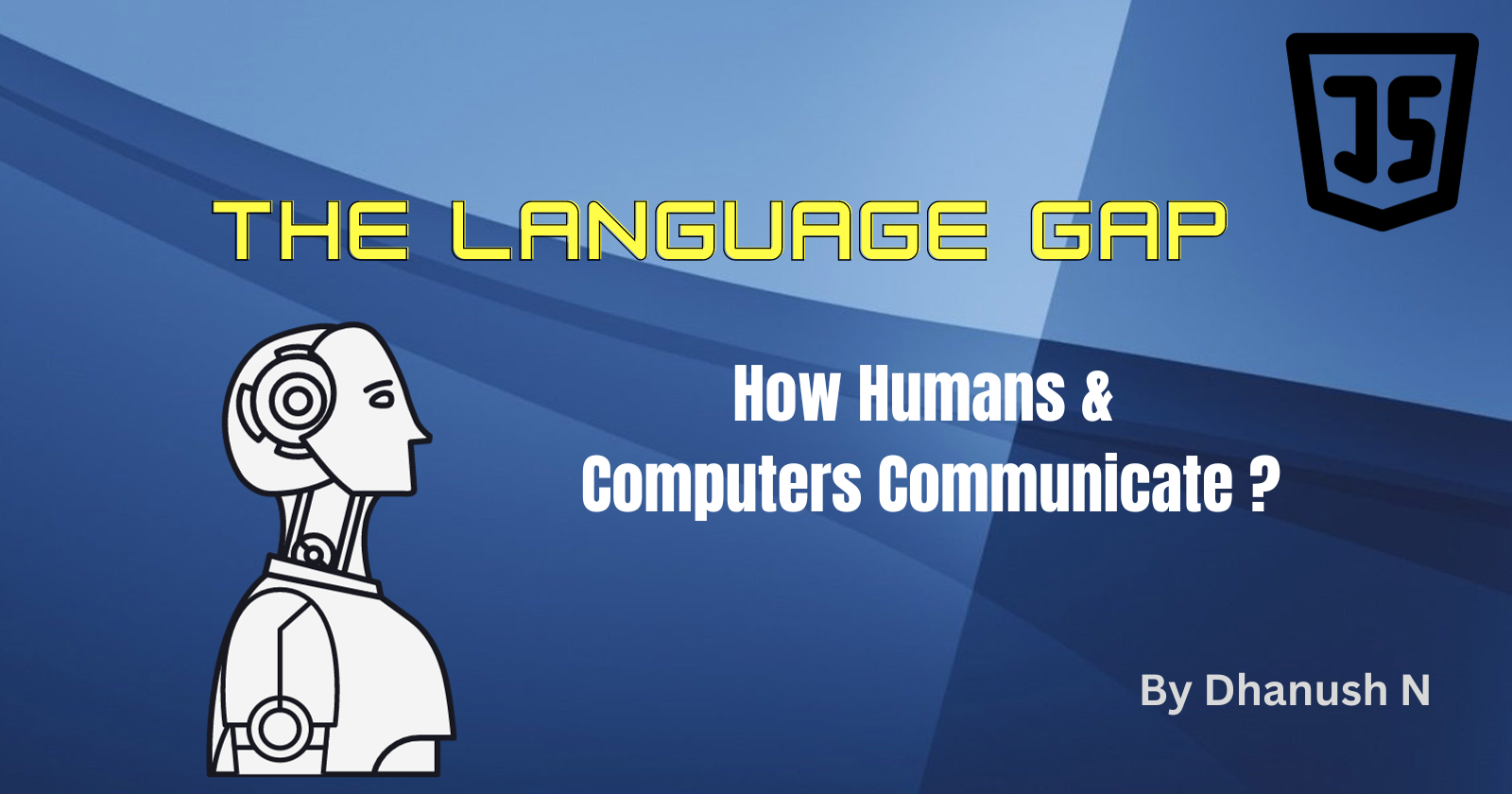The Language Gap | How Humans & Computers Communicate ?
 Dhanush N
Dhanush N
Introduction:
The basis of our existence is communication, which enables us to communicate thoughts, information, and feelings. Tamil, English, and Spanish are just a few of the languages that humans have created over the centuries to express themselves. Computers, on the other hand, work in a language environment that is entirely made up of 0s and 1s. In this blog, we'll delve into the fascinating area of human-computer communication and examine how we use coding and programming languages to overcome this language barrier.
The Search for Understanding:
Imagine asking a person their name; you would get a quick response. Asking a computer for their name, however, is likely to be met with silence. Because they are unable to understand human languages, computers do not have names in the same way that people do. Computers are restricted to the binary language of 0s and 1s, whereas humans are capable of understanding a vast range of languages.
The range of human languages: To interact with one another, humans have created an amazing variety of languages. These languages are full of nuance and terminology, whether it be the melodic flow of Tamil, the universal appeal of English, or the romance of Spanish. We communicate across countries and boundaries by using these languages to express our thoughts, feelings, and ideas.
Binary world of computers: Computers work in the binary world of 0s and 1s, in sharp contrast. With 0 designating an off state and 1 indicating an on state, this binary language expresses electrical states. Only this straightforward but effective language is comprehensible and processed by computers.
From Human to Machine Language Compilation: The source code is what we write when we use programming languages. We use a compiler, a specialized tool that converts the source code into machine code (0s and 1s), to make it understandable to computers. Our machine-readable code is converted into executable instructions by this compilation procedure.
Execution and Action: After the computer has interpreted our code, it is prepared to act. The computer precisely executes our commands, whether they be for a simple computation, a challenging simulation, or a website showing cat videos.
Learning the Language of Code: People can learn programming languages like how we learn to speak in diverse human languages. Coding is a method for efficiently expressing our objectives and concepts to computers. By writing code, solving problems, and experimenting with new technologies, we can develop our coding skills in the same way that we can improve our language skills via practice and study.
Conclusion:
We can overcome the language barrier between people and computers by learning the art of coding, which enables us to utilize all the capabilities of these amazing machines. Attached below is a simple short video that explains What is coding ?
Thanks for reading 😃
Connect with me on Twitter, Threads, Instagram, GitHub and subscribe to my YouTube channel ❤️
Subscribe to my newsletter
Read articles from Dhanush N directly inside your inbox. Subscribe to the newsletter, and don't miss out.
Written by

Dhanush N
Dhanush N
Experienced Consultant, Full Stack Developer, R&D Engineer who loves to solve puzzles & technology problems by code/